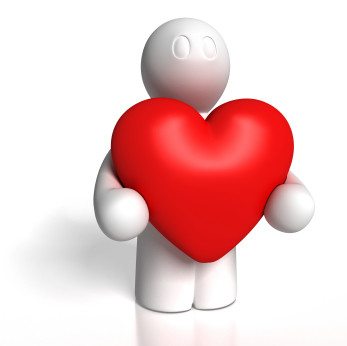What if your heart was too big?
What if your heart was too big? I have been called “big-hearted” many times through my life. Up until 2002 I took it as a compliment…a good thing. Then I caught a virus while travelling for business and wound up with an infection that settled into the enzymes in the fluid that surrounds my heart, causing the heart muscle tissue to inflame and enlarge. I had cardiomyopathy.
I was told I had a five year life expectancy. At that time I was 35. I was recently married 2 years prior, had bought a house the year prior, launched a business with my wife, and we were 3 months from welcoming our first daughter into the world. Five years was not an acceptable answer!
My Journey with Cardiomyopathy
I had always thought that big muscles were also a good thing. Several coaches and trainers over the years tried to beat that fact into my head while working out in gyms for football, wrestling, and fitness in general. What they never tell you, is that it is bad for your heart muscle to get so big! Mine had swelled to 2x the normal size easily, and the fact that it had grown bigger than intended, it became an inefficient pumping machine, and became less capable of pumping the life-sustaining blood through my body. My EF (ejection fraction) rate – the amount of blood that is pumped per one beat or squeeze of the muscle, had dropped to 12%.
I (being a typical guy) thought that the weakness and fatigue were related to the pace I was keeping for work, and a remaining effect of the flu type virus. It only concerned me when my body swelled up with edema (water weight) by over 40 pounds. When the heart is weaker, and the blood flow is slower, the body goes into preservation mode and starts shutting down other functions, like the liver and kidneys so I was not “evacuating” all the water. I ended up in the emergency room where I was diagnosed with viral cardiomyopathy, also known as chronic or congestive heart failure (CHF).
Treating Sleep Apnea
It was controllable in the first few years strictly through medicines. Another lesson I had always learned from Coaches was that the best offense was a great defense, so I started assessing heart health to see what could be done. Snoring and sleep apnea can greatly damage the heart by reducing/cutting off oxygen supply to the body. So after a sleep test was conducted, I began to use a bi-pap (constant air pressure flow device) and started to experience the best sleep I have ever had. Now it is like second nature to use, and the children know it as “Daddy’s sleeping mask” (not as cool as Batman’s cowl, but I can live with it).
Another line of defense that happened in 2004 was to install an ICD (Implanted Cardio Defibrillator) as an “insurance policy”. 90% of people who suffer from heart failure (cardiomyopathy) die from not receiving a life saving shock from first responders. I chose to carry my own on board. I only felt the shock on the first night it was installed when they tested the device. It feels as if you are hit in the chest by a baseball bat swung by a home-run hitter.
An ICD & Pacemaker
Things were progressing fine from there, until 2010. I went through a bad streak of illness from November of 2010 to February of 2011. I had a misdiagnosed infected gallbladder, that wasn’t removed until January of 2011. In February, we found out that the infections from the gallbladder had spread and attacked my already weakened heart.
My cardiologists recommended installing a pacemaker to help retrain the heart how to beat correctly and become a more efficient pump, and so it was added into the mix, and into me. The new device seemed to do the trick. I had lost over one hundred pounds by May of 2011 ( A huge part of which is due to my adopting a low/no sodium lifestyle which this blog is about). The pacer was helping the heart to pump correctly, but we soon found out that the medicines were starting to become less effective.
The medicines were changed, increased, decreased, swapped, and monitored in order to get the cardiomyopathy back under control. It wreaked havoc on my system. My electrolytes were going crazy, especially my potassium levels. That triggered several instances of heart trouble, where I received shocks on six different occasions. Not a fun experience.
An LVAD, The Waiting List, & Transplant
Finally, it was determined that I needed to go to the next level of heart health care. I was referred to the Cardiologists at the University of Minnesota. They needed to determine if I qualified to get a spot on the heart transplant list. I began the process of waiting for a donor heart to become available. Once I qualified, I was placed on the list. I also needed to have a LVAD (left ventricular assist device) implanted. It would help my heart pump the blood as I waited on the list.
The LVAD device allowed for the rest of my body to get healthier. In May of 2014 I was blessed to receive a heart from a donor. This is a new stage of my heart journey. At the end of 2016 I suffered another setback and challenge, which you can read about here. I need to protect this gift of a new heart. So I will continue to embrace and share the secrets I’ve used to hack the low/no sodium life.
Thanks for stopping by!


I have ipah and I am always looking for low sodium recipes. These look great1